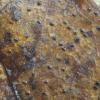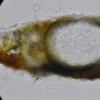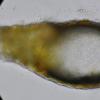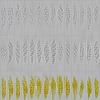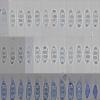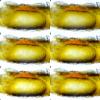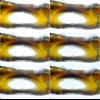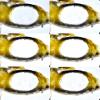
30-11-2025 12:53
 Edvin Johannesen
Edvin Johannesen
White short-stipitate apothecia found on thin twig

30-11-2025 10:47
 William Slosse
William Slosse
I recently found a collection of small Peziza sp.

27-11-2025 12:01
Thomas LûÎssû¡ehttps://svampe.databasen.org/observations/10496727

27-11-2025 11:46
Thomas LûÎssû¡ehttps://svampe.databasen.org/observations/10493918

17-09-2025 10:50
Heather MerryleesHi there!I am hoping for any advice on the identif

29-11-2025 08:40
 Andreas Millinger
Andreas Millinger
Hello,on a splintered part of a branch on the grou

28-11-2025 16:45
Nogueira HûˋctorNovember 23, 2025 Requejo de Sanabria (Leû°n) SPAI

25-11-2025 14:24
Thomas LûÎssû¡ehttps://svampe.databasen.org/observations/10490522

27-11-2025 15:41
Thomas LûÎssû¡eSporesô brownish, typically 4-celled; 26.8 x 2.4;

27-11-2025 11:31
Thomas LûÎssû¡eCollectors notes: Immersed ascomata, erumpent thro

Good afternoon
Do you know what this "Pyreno" could be? In Acer leaves, surely A. monspeliensis. They are soft black dots, bulging when hydrated, tiny, which occupy the entire width of the leaf, as you can see in the photos. It doesn't look like a classic Pyreno, it probably isn't.
The asci have a curious apical apparatus, very marked, but it is inamyloid. All asci I've seen have that irregular shape on the walls, I assume they're alive, although it looks like they're not. Spores are 2-celled, with 4 large LBs, 2 per cell, and hyaline conical appendages at the ends.
Orienting myself for the spores I have gone to the genera Anisomeridium, Naetrocymbe, Lophiostoma, Vaginatispora, Lophitrema, Pseudocoleophonea and Wettsteinina, but I don't see anything like that.
These are the measurements:
Spores
(15.5) 16.1 - 17.4 (18.3) û (4.1) 4.7 - 5.3 (5.6) ôçm
Q = (3) 3.1 - 3.6 (4) ; No. = 38
Me = 16.7 û 5 ôçm; Qe = 3.4
Asci
(60.1) 60.6 - 72 (83.9) û (10.8) 11.8 - 14.5 (15.6) ôçm
Q = (4.2) 4.4 - 5.7 (6) ; No. = 42
Me = 67.1 û 13.3 ôçm; Qe = 5.1
Thank you so much.
Miguel û. Ribes

A photo of the asci would be very helpful here.
Are the asci swimmig in the perithecial centre? I ask this because the asci seem to have a Diaporthe-like apical ring, spores are Diaporthe-like too. So we have perhaps to look for your collection in the Diaporthales/Sordariomycetes instead of the Dothideomycetes.
Regards,
Bernard
I think, as Bernard, says, you should look at the Diaporthales, the strongly refractive inamyloid apical apparatusô and the sharply cut asci indicate this.

The fifth photo shows asci in water, iki and in blue ink.
I think asci are free swimming in the perithecium. I will find in Diaporthales.
Thanks a lot

I will try to make sections now in dry-state. In fresh-state (fig. 2, 3) it is very soft and crushes.

Leaf-inhabiting genera of the Gnomoniaceae, Diaporthales.ô M.V. Sogonov, L.A. Castlebury, A.Y. Rossman, L.C. MejûÙa and J.F. White. 2008
A systematic account of the genus Plagiostoma (Gnomoniaceae, Diaporthales) based on morphology, host-associations, and a four-gene phylogeny.ô L.C. MejûÙa, L.A. Castlebury, A.Y. Rossman, M.V. Sogonov and J.F. White, Jr. 2011.
I don't find information about L. bavaricum.
Thank you.
In-depth studies should be carried out, as Sogonov, Meijia and Walker have been able to do in certain groups of these Gnomoniaceae.
The situation is similar for species on Euphorbia or Geranium: perhaps an updating needs to be made using molecular biology, by bringing in new species.
Alain

I see that it is another group in which it is necessary to deepen, including molecular studies. My samples are available to whoever is needed.
I still can't find documentation on Plagiostoma bavaricum beyond the original description of Hypospila bavarica, I would appreciate any documentation on the species.
Thank you.
Gnomoniaceae but it cannot be placed in a genus. As Alain says, more studies would be needed to try to better define this or these species.


ô I will find it again sometime.
Thanks Enrique

